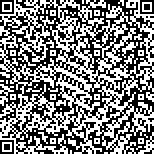袁俊英,张利红,孙二亮,朱登纳,孙强三.儿童持续性植物状态预后的影响因素分析[J].中华物理医学与康复杂志,2016,38(6):436-439
扫码阅读全文

|
| 儿童持续性植物状态预后的影响因素分析 |
|
| |
| DOI: |
| 中文关键词: 持续性植物状态 脑干听觉诱发电位 意识恢复 PVS评分 |
| 英文关键词: Vegetative state Brainstem Auditory evoked potentials Logistic regression |
| 基金项目: |
|
| 摘要点击次数: 3789 |
| 全文下载次数: 5570 |
| 中文摘要: |
| 目的 探讨影响持续性植物状态(PVS)患儿意识恢复的重要因素。 方法 本研究共选取43例PVS患儿并给予综合康复治疗,包括物理干预(如Rood技术、关节活动度训练等)、药物治疗以及头部水针穴位注射等。于治疗3个月后对其意识恢复情况进行评定,并将其意识恢复与否作为结局指标,采用非条件Logistic回归分析方法对各个可能的影响因素进行单因素分析,并将有意义的因素纳入多因素分析,从而探讨影响PVS患儿意识恢复的重要因素。 结果 本研究入选43例PVS患儿经综合康复治疗3个月后,共有29例患儿恢复意识,其意识恢复率为67.44%;通过Logistic回归分析发现,发病时年龄、入院时脑干听觉诱发电位(BAEP)评分、治疗前PVS评分与PVS患儿意识恢复具有显著相关性(P<0.05),而性别、损伤类型、脑电评分、发病后开始康复时间与PVS患儿意识恢复无明显相关性(P>0.05)。 结论 PVS患儿年龄越大、入院时BAEP评分、治疗前PVS评分越高,则患儿意识恢复的可能性越大。 |
| 英文摘要: |
| Objective To explore the factors affecting the prognosis for a child in a persistent vegetative state (PVS). Methods Forty-three PVS children were selected and provided with comprehensive rehabilitation training. It included physical therapy such as Rood approach and range of joint movement training, medication and hydro-acupuncture at the head points. After three months, each patient′s state of consciousness was quantified, and multiple-factor unconditional logistic regression was conducted to identify factors relating to any changes. Results By the end of the intervention, 29 of the patients had regained consciousness, a recovery rate of 67%. Logistic regression revealed that age, brainstem auditory evoked potentials (BAEP) and PVS score at admission all were closely related with whether a child regained consciousness. Gender, type of damage, EEG score, and the initial time of intervention had no significant relationship with regaining consciousness. Conclusions Older PVS patients with higher BAEPs and PVS scores at admission are more likely to regain consciousness. |
|
查看全文
查看/发表评论 下载PDF阅读器 |
| 关闭 |
|
|
|